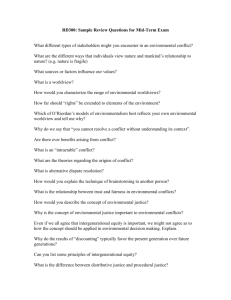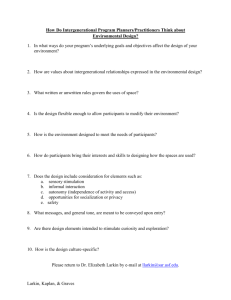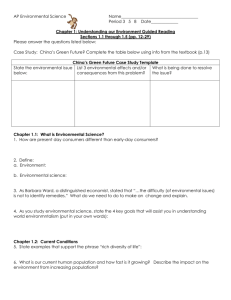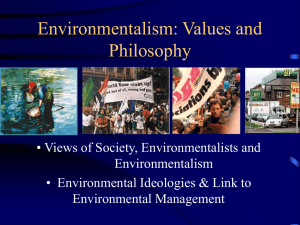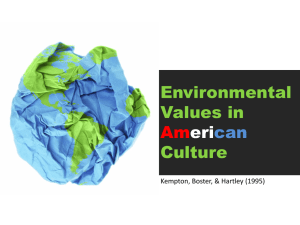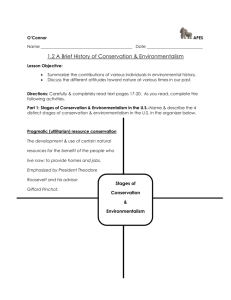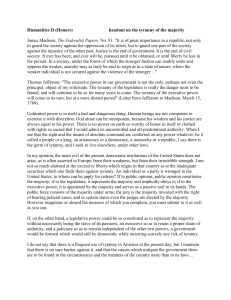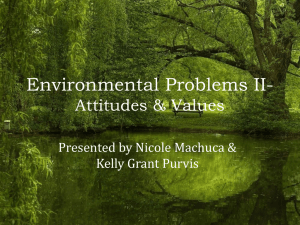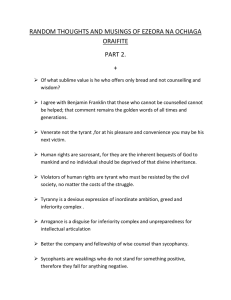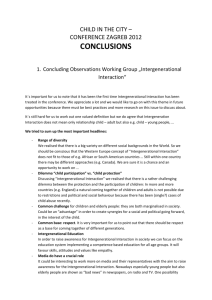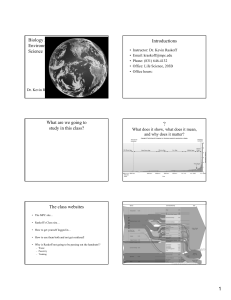Cradle to Cradle: McDonough & Braungart Presentation
advertisement
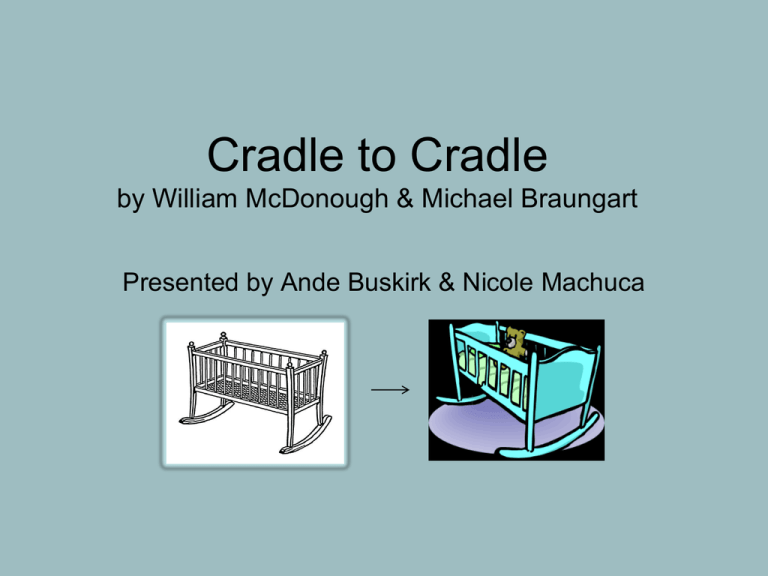
Cradle to Cradle by William McDonough & Michael Braungart Presented by Ande Buskirk & Nicole Machuca Chapter 1 - A Question of Design • • • • • • Bad design is everywhere. Titanic and Industrial Revolution Resistance and romantics Universal design- the worst case scenario Crude products and products plus Intergenerational remote tyranny or a Strategy of change Chapter 2 - Why Being “Less Bad” is No Good • Eco-efficiencey, RRR, and superficiality – Monsanto, Dupont, Johnson & Johnson • A range of pollutants • Problems with incinerating, composting, recycling • Efficiency has no independent value • What does it look like to be 100% good? Chapter 3 - Eco-Effectiveness • 3 books • Not efficient, effective- we want more of it • Cherry tree and ants • Becoming native to Earth • Zero is not the right goal- deprivation, starvation Chapter 4 - Waste Equals Food • • • • • Bio mass and Tech mass Away Sewage problems Metabolisms- a reflection of Hawken? Insanity and Negligence Chapter 5 - Respect Diversity • • • • • One-size-fits-all De-evolution Fitting-est Diversity All sustainability is local -sewage, energy, cars, soap • -Isms: extreme • Economy, Equity, Ecology and Industrial Reevo Chapter 6 - Putting EcoEffectiveness into Practice • Ford River Rouge • Free of, Personal Preference, Passive Positive, Activate, Reinvent and redesign • Intention • Restorative action • Innovation • Brace for the learning curve • Responsibility to future Major Themes/Interesting Points Move away from: Cradle-to-grave as acceptable Standardization in industry – one-size does not fit all Creating in obsolescence – prioritize upcycling Environmentalism focusing on what not to do Education & research focus on analyzing problems, not finding solutions 2 metabolisms: Technical vs. Biological Nutrition/Food Should adhere to nature’s model – cradle-to-cradle Look to indigenous & less industrialized regions for design ideas Stop trying to fix industry – redesign it Respect Diversity Principal: Design should account for not only biodiversity, but cultural and locale diversity Triple Top Line Approach: Balancing ecology, equity, & economy Recurring Themes • Westerners saw nature as something to be dominated • Environmentalism does not conflict with economic growth • Currently one paradigm of progress • Society should strive for “good” growth – not merely economic growth • Current failure in imagination and creativity • Should adhere to nature’s model • Smaller systems better Quotes • “Urban and industrial growth is often referred to as a cancer, a thing that grows for its own sake and not for the sake of the organism it inhabits.” pg. 77 • “We begin to make human systems and industries fitting when we recognize that all sustainability (just like politics) is local.” pg. 123 • “Respecting diversity in design means considering not only how a product is made but how it is to be used, and by whom. In a cradle-to-cradle conception, it may have many uses, and many users, over time and space.” pg. 138 Remaining Questions/Discussion • My one question that still remains is how we can get industries to want to make this change to a new system of this sort. – Lauren • I think the consumer on the other end of the process is an important component. How can we expect companies to shift, to change their ways, when the consumer will likely be upset with rising costs, decreased mobility, and vastly different products? – Adam • Like any aspect of life, people tend to favor change when there is an incentive involved.…I think the combination of framing the change in a positive outlook with incentives to change are a start in getting people on board.” - Bob Vocabulary • Effluents: Waste products • Downcycling: Reduces quality of objects over time • Intergenerational Remote Tyranny: Actions that deprive and harm future generations • Eco-efficiency: Doing more with less • Biological nutrient: material designed to return to biological system • Technical nutrient: material designed to return to industrial cycle, e.g. plastic, steel • Unmarketables: Hazardous materials, e.g. nuclear waste
